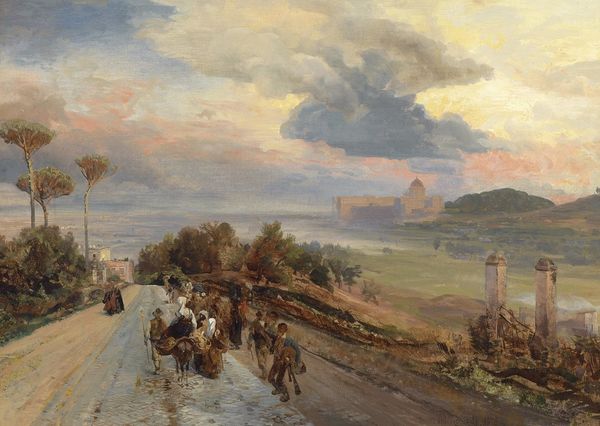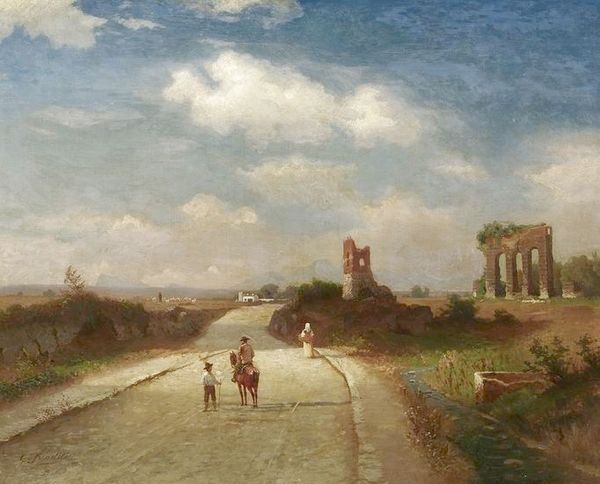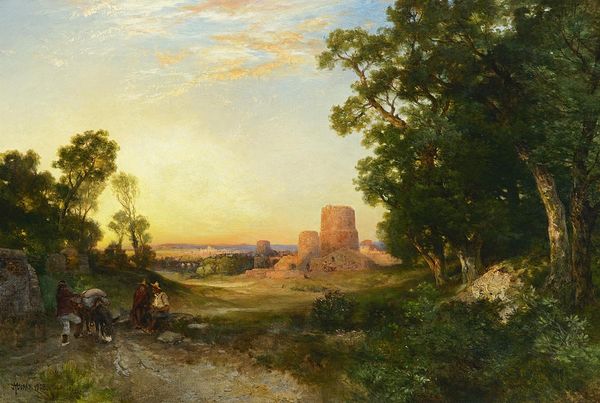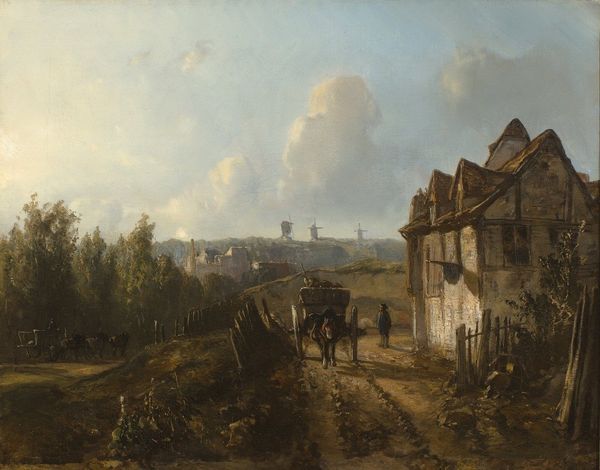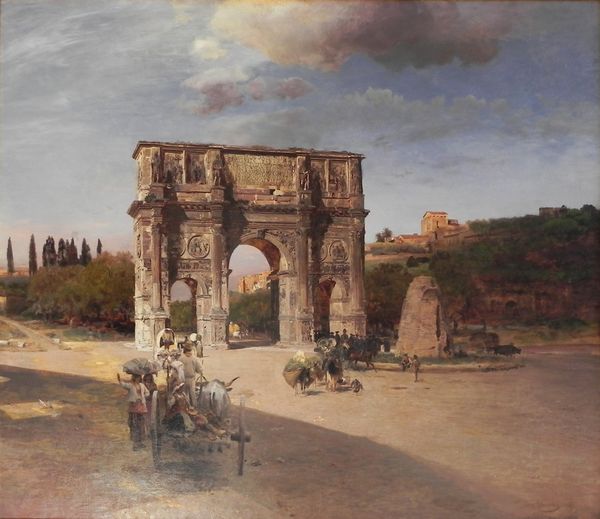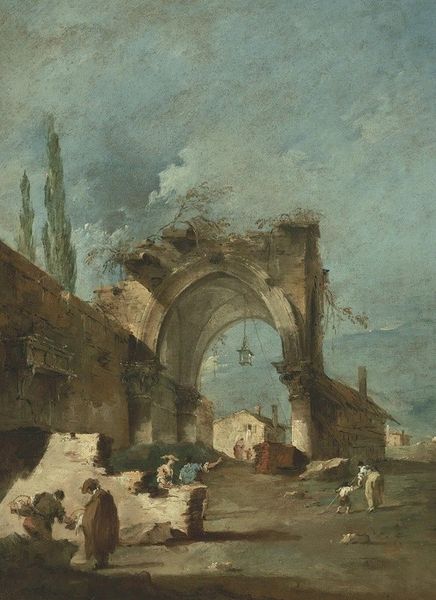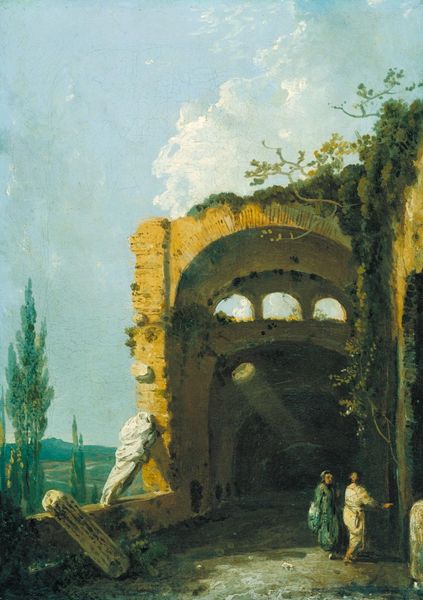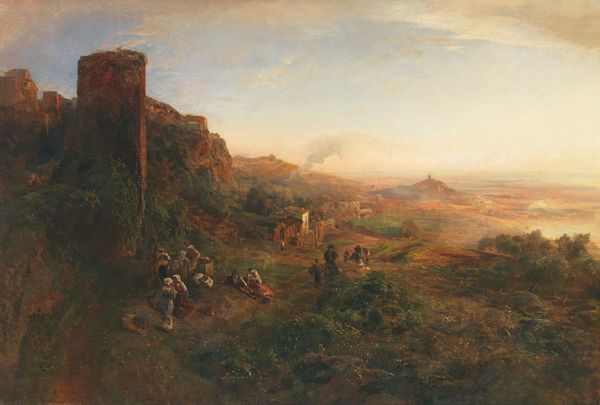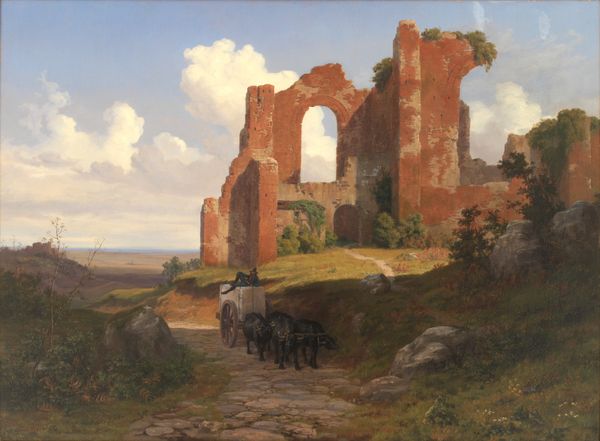
Copyright: Public domain
Editor: This oil painting is called "Roman Landscape," created around 1905 by Oswald Achenbach. It has such a moody, almost cinematic quality, wouldn’t you agree? What draws your eye, what stands out to you the most when you view it? Curator: Indeed, the drama is palpable! My gaze immediately fastens onto the ruins, the fragmented architecture. Tell me, what do ruins evoke in you? Editor: I guess… a sense of loss, or maybe the passage of time. Curator: Precisely! But go deeper. Think of Rome, the Eternal City. Achenbach uses these ancient remnants as powerful symbols. He's tapping into centuries of cultural memory, layering the present onto the past. Do you notice how the figures in the foreground seem to almost flee the looming storm? Editor: Yes, they seem to be hurrying, almost escaping something. Curator: Consider that "something" might be the weight of history itself, or perhaps a premonition of future turmoil, reflected in the sky’s drama. The ruins are a constant reminder of past civilizations; do you think he’s contrasting their impermanence with the lives of the present-day inhabitants? Editor: That's a fascinating idea. It's more than just a pretty landscape; it’s a meditation on time, history, and perhaps even mortality, through symbols like ruins and weather. Curator: Exactly! Achenbach speaks through visual allegories. And recognizing those symbols helps us interpret not only his intentions, but also our own connection to the ever-evolving story of humanity. Editor: I’ll definitely look at landscapes differently from now on. It's amazing how much a painting can reveal about history.
Comments
No comments
Be the first to comment and join the conversation on the ultimate creative platform.

